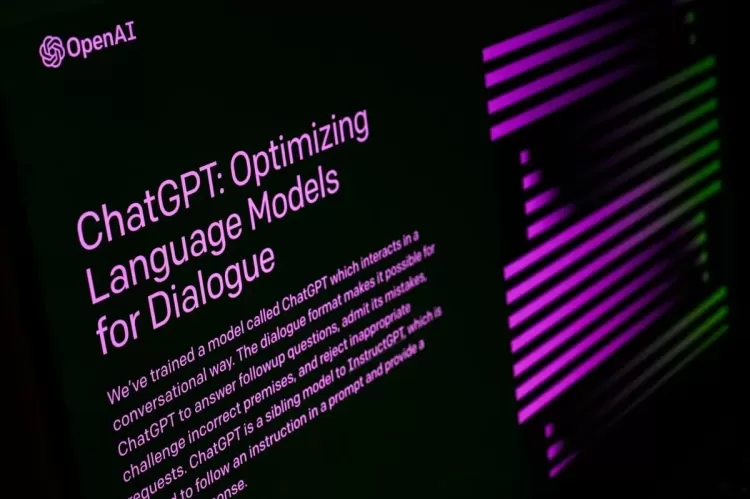OpenAI Unveils Deep Research: A Breakthrough in Multi-Step Web Browsing for Knowledge Work and Consumer Needs
OpenAI’s latest innovation, Deep Research, brings the power of multi-step web browsing to transform how we approach knowledge work. This new capability allows models to browse, synthesize, and reason about content from the web, offering users comprehensive, fully cited reports. In this article, we explore how Deep Research can revolutionize industries and personal tasks, as well as OpenAI’s vision for autonomous agents.

OpenAI has taken a significant step toward enhancing the capabilities of artificial intelligence with the launch of its new feature, Deep Research. This powerful tool is designed to address the limitations of traditional models by incorporating the ability to browse the web and perform multi-step research. By leveraging this feature, users can now access comprehensive reports, much like those produced by human experts, based on real-time information from the internet.
This new functionality marks a crucial development in OpenAI’s journey toward Artificial General Intelligence (AGI). With Deep Research, OpenAI aims to automate the research process for both knowledge workers and consumers, enabling more efficient and productive workflows.
Context & Background
For years, AI models have been effective in answering queries quickly but were limited by their inability to browse the web for real-time information. Traditional models would rely on pre-existing datasets, often failing to answer complex or specific questions. The introduction of Deep Research changes this dynamic entirely. Now, AI can browse, learn, and adapt its research plan as it gathers more information, making it an invaluable tool for both enterprises and individual users.
The deep research capability is powered by OpenAI’s O3 reasoning model, which has been fine-tuned using end-to-end reinforcement learning. This advanced model is capable of handling complex tasks that require more than simple responses, such as creating market reports, conducting academic research, or providing tailored product recommendations.
Main Developments: Deep Research Explained
The Evolution of Agents in AI
OpenAI has long believed that agents—AI systems capable of reasoning, learning, and performing tasks autonomously—are the key to transforming knowledge work. The concept of agents is central to OpenAI's vision for AGI, where systems can think critically, adapt over time, and solve complex problems with minimal human intervention. Deep Research represents a key step in this vision, as it allows agents to tackle extended, multi-step tasks that would typically take humans hours to complete.
One of the standout features of Deep Research is its ability to perform extended web browsing. Unlike traditional AI models, which provide answers almost immediately, Deep Research can take minutes, even up to 30 minutes, to research a query in-depth. This extended time frame allows the model to reason through the information it uncovers, ultimately delivering more accurate, detailed, and comprehensive results.
The Power of Deep Research for Knowledge Work
Deep Research is tailored to a variety of knowledge work domains, from market research and academic research to business decision-making. For instance, OpenAI demonstrated the power of this feature through a product manager's use case. By simply entering a detailed query, the model was able to synthesize information from a variety of sources, providing insights on iOS and Android adoption rates, mobile penetration trends, and language learning habits across developed and developing countries. The resulting report was presented in a clear, well-structured format, complete with tables and citations—tasks that would have otherwise taken a human analyst days to compile.
For market researchers, Deep Research can drastically reduce the time spent gathering and synthesizing data. Whether you're looking to analyze consumer behavior, understand industry trends, or evaluate potential investment opportunities, Deep Research provides a seamless, automated solution for collecting valuable insights.
Personal Use Cases: From Ski Equipment to Product Research
While Deep Research is powerful for professionals, it also offers significant value to everyday consumers. One example highlighted by OpenAI’s team involved using Deep Research to purchase skis for a ski trip in Japan. Instead of manually browsing various websites for reviews and product comparisons, the user was able to input specific parameters into Deep Research, such as ski type, size, and color preferences. The model then returned a well-researched report with product recommendations and comparisons, saving the user hours of effort.
This ability to conduct detailed product research is especially useful for major purchases, where consumers often seek comprehensive information before making decisions. Deep Research can scour the web for reviews, specifications, and price comparisons, delivering a well-rounded, trustworthy buying guide.
Analysis: Why Deep Research is a Game-Changer
The Power of Multi-Step Reasoning
At the heart of Deep Research is its ability to reason through multiple steps of a task. As the model gathers more information, it adapts its search plan to incorporate new findings, ensuring that the research is comprehensive and current. This feature is essential for answering complex questions or tackling tasks that involve multiple facets, such as analyzing market trends or solving academic problems.
For businesses, this capability is transformative. The ability to perform complex research and generate insightful reports autonomously can drastically reduce the time spent on data gathering and analysis, allowing workers to focus on higher-level strategic tasks. This leads to greater productivity and more informed decision-making.
The Path Toward AGI
Deep Research is a foundational step toward achieving AGI, where AI systems can perform tasks autonomously with little to no human input. As OpenAI’s models become more capable of performing complex, long-duration tasks, they move closer to the goal of creating agents that can think critically, adapt, and solve difficult problems without human intervention.
This move toward autonomous research is part of OpenAI’s broader AGI roadmap, where the ultimate goal is for AI to not just assist humans but to independently uncover new knowledge and solve complex problems. The success of Deep Research is a significant milestone in this journey.
Regional Focus: OpenAI’s Global Vision
The launch of Deep Research is not just a breakthrough in AI technology; it is also a reflection of OpenAI’s commitment to global collaboration. The company's decision to host a special event in Tokyo underscores its international presence and the global impact of its research. By providing users with advanced tools that can conduct multi-step web research and synthesize information, OpenAI is empowering individuals and businesses across the world to make better decisions faster.
Conclusion: The Future of Deep Research
As Deep Research rolls out to more users, including those on Pro, Plus, and Team plans, its potential to reshape industries and consumer behavior is enormous. This tool will continue to evolve, with OpenAI’s long-term vision focused on developing agents that can operate independently and solve more complex problems.
The introduction of Deep Research represents a leap forward in the capabilities of AI, and it signals a future where artificial intelligence not only assists in daily tasks but takes on autonomous, high-level work. With further improvements and integrations, Deep Research could become an indispensable tool in the toolbox of professionals and consumers alike.
What's Your Reaction?
















